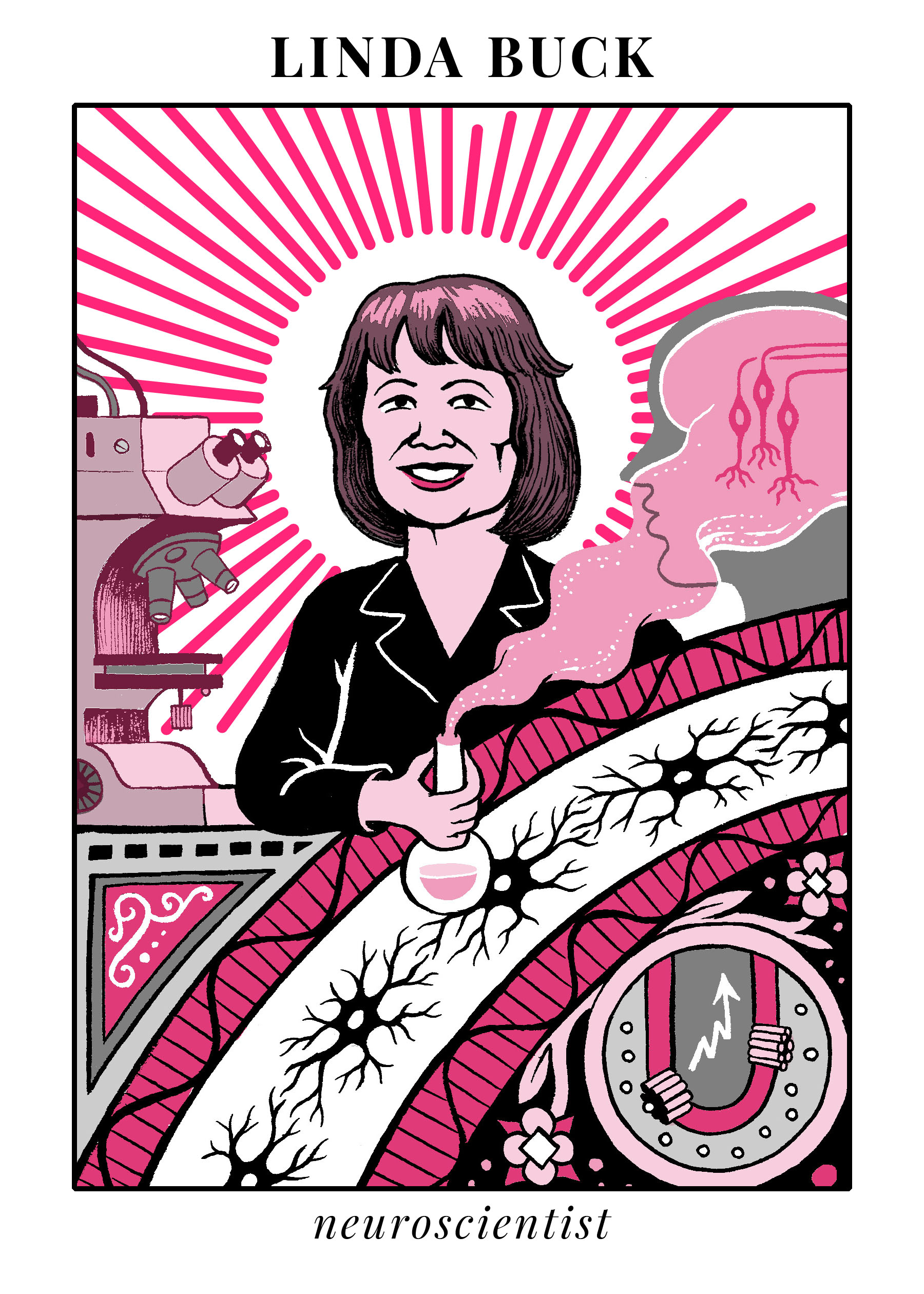Five facts about Linda Buck, olfactory pioneer
The Nobel Prize-winning biologist revolutionized how we think about our noses
Matteo Farinella
1. She took her time finding her scientific passion
As she writes in her 2004 Nobel lecture, Linda Buck, now at the Fred Hutchinson Cancer Research Center in Seattle, started studying psychology at the University of Washington. She thought she wanted to become a psychotherapist. But she wasn't satisfied, and spent several years traveling, living on an island outside of Seattle, and exploring different directions. She ultimately decided on biology after being fascinated by an immunology course, and graduated from UW with a dual degree in psychology and microbiology in 1975.
2. She learned to love puzzles and inventing from her mother and father
Buck credits her mother, a homemaker with a love for puzzles, and her father, an engineer who tinkered with inventions in the basement, with instilling in Buck a keen sense of curiosity and personal ambition.
Ann-Sophie Barwich, who studies Philosophy and History of Science and the Senses at Columbia University and is a self-described "slightly maniac Linda Buck fan," told us via email:
"The puzzle solving is really visible in her experimental design in the discovery of the olfactory receptors. You’ll often hear others say how elegantly this was done. In fact, the original paper was recently commented on by other olfactory experts in a series in Cell where the editor invited other experts in the field to reflect on major breakthroughs in the last 40 years of biology."
3. She valued intellectual independence from a young age
Independence is a theme that runs through Buck's career. She credits her parents with giving her the time and space to develop her intellectual curiosity at a young age, writing: "I frequently embarked on what were to me new adventures. Aside from school and music lessons, my life was relatively unstructured and I was given considerable independence."
Buck moved to New York City in 1980 to study immunology at Columbia University. But she quickly realized that she would need to learn more about the new field of microbiology to satisfy her curiosity about how molecular processes impact biology and behavior. To learn these techniques, she started working with Richard Axel, her Nobel Prize co-recipient. She credits Axel with letting her pursue high-risk projects that later influenced the work she's most famous for:
"I was grateful that Richard was tolerant of my high-risk endeavors. He was an unusual mentor in that he gave people in his lab extensive independence in charting their own course once they had established themselves."

Linda Buck
Illustration by Matteo Farinella
4. She discovered how the brain processes scent, and won a Nobel Prize for it
Buck's best-known research was inspired by a 1985 paper by Johns Hopkins neuroscientist Sol Snyder about the search for the molecular mechanisms behind odor detection. She became fascinated by what was then an enormous mystery: how are animals are able to detect tens of thousands of scents, and why some nearly identical chemicals generate vastly different smells?
"In my mind, this was a monumental puzzle and an unparalleled diversity problem. It was obvious to me that the first step to solving the puzzle was to determine how odorants are initially detected in the nose. This meant finding odorant receptors, a class of molecules that had been proposed to exist, but had not been found."
In 1988, Buck started working on the problem in Axel's lab. Her experience in microbiology proved to be a perfect match, because she was used to working with biological systems that had to process lots of complex data. Working with rats, Buck started looking for a family of genes that she believed would only be expressed in the "olfactory epithelium" at the back of the nose, and that would be responsible for odor detection.
What she found shocked the scientific community. Not only did those genes exist, but there were over 1,000 of them in rats – way more than anyone, including Buck, expected. To put it into perspective, the mammalian genome contains somewhere around 20,000 genes. Which means that a significant percentage of them are devoted exclusively to being able to smell. Not only that, Buck's discovery of such a huge number of genes exclusive to the nose seemed to indicate that most of the work to process smells happens in the nose, rather than the brain. The mammalian heritage as small, scavenging animals apparently made having a keen sense of smell incredibly important.
Buck and Axel published their findings in 1991, and were awarded the Nobel Prize in Medicine in 2004.
5. Her Nobel-winning work was just the beginning
After publishing her landmark paper, Buck moved to Harvard Medical School, where she setup a lab that has been answering questions about the olfactory and other sensory systems ever since. In 1999, she answered one of the lingering questions from her earlier discovery. Humans have fewer smell receptors than rats – around 350 – but we're still, somehow, capable of detecting around 10,000 distinct odors. Buck discovered that our receptors have overlapping capabilities, registering multiple smells each and combining to detect distinct odorants. In 2001, her team published a "map" of this process by tracing olfactory genes from the nose to the brain.